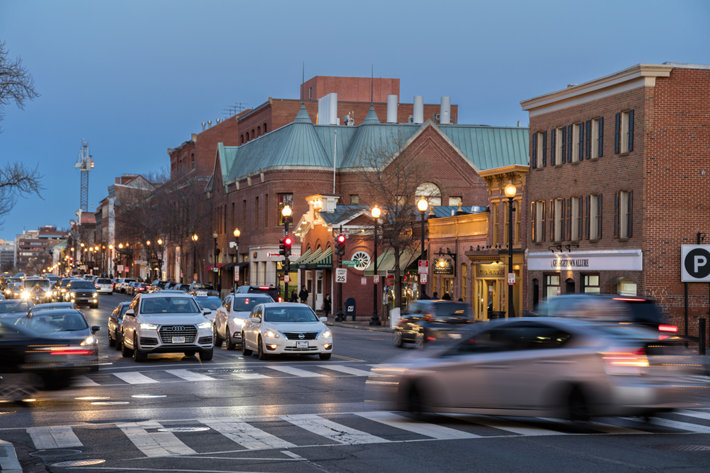The Rise of Drugged Driving in America

Driving while impaired is a serious threat to public safety. Many factors can create impairment, and drugs are one of them. Sadly, drugged driving is becoming more common in the United States, making roads more dangerous for everyone. While the United States has long battled against alcohol-impaired driving, there has been little effort to curtail the rising threat of drug-impaired driving.
Why is drugged driving becoming more prevalent? Has growing legalization efforts contributed to drugged driving? And can we use the same preventive measures to address drugged driving that are already in place to prevent drunk driving?
Drugged Driving Now a Serious Issue in the U.S.
What is drugged driving? Dr. Robert L. DuPont and Dr. Corinne L. Shea of the Institute for Behavior and Health defined drugged driving for a National Association of Drug Court Professionals report. Quoting the doctors, “The term drugged driving refers to driving after the use of impairing substances other than alcohol or combined with alcohol. When alcohol is used alone, impairment is called drunk driving. Drugged driving is now occurring at a level comparable to drunk driving. Drug impairment can be caused by illegal drugs, misused prescription drugs either with or without a prescription, over-the-counter medications, and consumption of other chemicals.”
While drunk driving statistics continue to drop, drugged driving statistics have gotten progressively worse. Furthermore, drivers often use multiple drugs at the same time, including alcohol. Combining drugs and alcohol produces more impairment. While law enforcement officers have good training and time-tested technology for detecting drunk driving, law enforcement is currently lacking in prevention strategies for detecting and curbing drugged driving. These factors create a perfect storm of sorts, which is why drugged driving may outpace drunk driving in accidents, injuries, and fatalities.
In fact, in a few recent years, drugged driving has already outpaced drunk driving. According to a UC Cincinnati study titled, “Drugged Driving Among US Adults: Results from the 2016–2018 National Survey on Drug Use and Health,” more people die in motor vehicle accidents with drugs in their system than with alcohol. According to the data, 43% of people who lost their lives in an automobile accident in 2015 had drugs in their system, compared to 37% who had alcohol in their system.
This problem is getting progressively worse. According to the National Highway Traffic Safety Administration, about 25% of fatally injured drivers in 2007 tested positive for a drug. By 2016, that percentage almost doubled to 42%.
A Lack of Preventive Measures Contributes to the Problem
Because drugged driving is a relatively new problem (new at least in the severity of the problem), there is a sore lack of effective prevention measures to tackle drugged driving. One group of researchers interviewed 238 drug prevention professionals and highway safety experts to determine what was needed to improve preventative measures.
Quoting the study authors, “Most respondents reported needing training and resources to implement strategies related to drugged driving, particularly with regard to engaging youth and parents, if they are to address this problem effectively. The majority of respondents also reported low levels of self-efficacy for implementing a wide range of drugged driving prevention strategies. Our findings reveal that the professionals we need to feel prepared and efficacious to prevent drugged driving have generally low feelings of confidence in their ability to do so.”
“Trends show an increase in the number of drivers testing positive for marijuana and other drugs that can impair driving...”
The problem of prevention is exacerbated by the simple fact that we do not currently have the technology to measure impairment from drugs as we do with alcohol impairment. Quoting research from the National Highway Traffic Safety Administration, “Trends show an increase in the number of drivers testing positive for marijuana and other drugs that can impair driving, but specific drug concentration levels can’t be reliably equated with a specific degree of driver impairment.”
Until sufficient resources, funding, research, and technological innovation are directed towards the public health campaign of tackling and reducing drugged driving, this problem will continue to grow.
Drugged Driving and Increasing Marijuana Legalization
There is a direct connection between increasing marijuana legalization and an upsurge in drugged driving statistics. For one, marijuana is the most common drug found in toxicology reports and drug tests. And in states like Colorado, traffic deaths soared following marijuana legalization. From 2013 to 2017, traffic deaths in Colorado directly connected to marijuana more than doubled, from 55 deaths in 2013 to 138 deaths in 2017.

Similar findings were uncovered in Washington State. According to the National Conference of State Legislatures, the number of drivers in Washington who tested positive for marijuana after a fatal car crash doubled (from about 9% to about 18%) since the state legalized marijuana in 2012.
Drugged Driving and the Future
Drugged driving creates unpredictable risk factors, especially when someone uses multiple drugs at once and then attempts to drive an automobile. If this problem doesn’t receive the attention it deserves, these risk factors will translate into more traffic deaths each year.
A possible solution to reducing drugged driving is to create similar prevention models as have been used for drunk driving over the last several decades. Research is required, as is innovation, policy implementation, technological advancement in roadside testing, public education efforts, etc. Furthermore, the American people as a citizenry need to do their part to form groups and raise awareness of drugged driving dangers, much like the group Mothers Against Drunk Driving does for alcohol-impaired driving. Furthermore, organizations and institutions that already exist to tackle drunk driving need to expand to include drugged driving within their scope (MADD, for example, is already doing this).
Quoting Andrew Yockey, a doctoral student in UC’s College of Education, Criminal Justice and Human Services and one of the study authors for the Journal of Safety Research study cited earlier, “We need to focus our efforts on drugged driving, in addition to drunk driving, because drugged driving causes such a high level of fatalities. Even though less people are driving, drugs are increasing in availability. They are being found in more reports of drugged driving in the U.S.”
Drugged driving is unpredictable and dangerous. When people get behind the wheel of a car after using multiple drugs or after mixing drugs with alcohol, they increase their risk factors dramatically. Drugged driving is becoming much more serious and will likely continue unless bold and direct efforts are taken to prevent it.
Sources:
- https://www.ndci.org/wp-content/uploads/2016/08/Drugged-Driving.pdf
- https://doi.org/10.1016/j.jsr.2020.10.006
- https://www.nhtsa.gov/sites/nhtsa.dot.gov/files/documents/13839-drugged_facts_flyer_101918_v8_002.pdf
- https://doi.org/10.1007/s10935-019-00555-2
- https://www.ncsl.org/research/transportation/drugged-driving-overview.aspx
- https://www.madd.org/
- https://www.uc.edu/news/articles/2021/01/uc-reserachers-say-there-needs-to-be-more-focus-on-drugged-driving.html


 ®
®